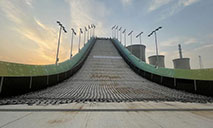RCEP to boost regional GDP by 0.86% by 2035: report

Photo: Xinhua
The Regional Comprehensive Economic Partnership (RCEP) pact, which creates the world's largest free trade bloc, will lift regional GDP by 0.86 percent by 2035, a report by the Chinese Academy of International Trade and Economic Cooperation stated on Sunday.
Chinese companies and localities are gearing up to reap the mutual benefits of the trade pact, officials and industry players told the Global Times on the sidelines of the 4th China International Import Expo in Shanghai.
There will be a net increase of $857.1 billion in exports and $983.7 billion in imports for the region by 2035, from a base level, the report showed. In terms of percentage points, the increase for exports will be 18.30 percent and 9.63 percent for imports.
The report came after China's Ministry of Commerce (MOFCOM) announced that China had completed all necessary preparations for fully implementing the RCEP as of Saturday. On Wednesday, the MOFCOM announced that after 10 members deposited the instrument of ratification with the ASEAN Secretary-General, the RCEP will take effect on January 1, 2022, as agreed upon.
In terms of investment, the freshly released report noted that the pact will drive up investment in the region by 1.47 percent, with additional economic welfare reaching $162.8 billion. By 2035, the RCEP will drive the real GDP growth of the entire world up by 0.12 percentage points and global foreign trade by 2.91 percent, the report said.
The report found that members of the Association of Southeast Asian Nations (ASEAN) will be the biggest beneficiaries of the pact in terms of GDP growth. An overall lift of 4.47 percent is to be recorded by 2035, with a 7.98-percent-increase for Cambodia; a 7.04-percent-gain for the Philippines and a 6.38-percent-increase for Thailand. Vietnam will see a 6.33-percent-increase in GDP.
Chinese localities are also gearing up for increased trade with ASEAN countries, as a total of 166,000 Chinese entrepreneurs, trade and customs officials and related personnel have completed RCEP training in over 600 training sessions and online training courses this year.
Zhu Yong, a senior commerce official in Northwest China's Xinjiang Uygur Autonomous Region, told the Global Times on Sunday that the region believes the RCEP is a precious opportunity for high-quality opening-up and the best opportunity since China's accession to the WTO.
In the first half of 2021, Xinjiang's trade with RCEP countries only accounted for 7.1 percent of Xinjiang's total foreign trade. The figure lagged far behind the national average of 31.7 percent.
"The gap means Xinjiang faces a unique chance of achieving faster growth in the coming years in its trade with RCEP member countries, and there is a strong complementarity for goods traded," Zhu said. "For instance, Xinjiang's fruits, raised in a temperate climate zone, have big potential in the ASEAN market, and theirs as well in Xinjiang."
For non-ASEAN members, South Korea is expected to see the biggest cumulative increase in exports, at 7.84 percent, while China will see the biggest increase in imports, at 10.55 percent, over the projected period. Simulations showed that China, ASEAN and Japan will see economic welfare increases of $99.6 billion, $67 billion and $51.2 billion, respectively, from base levels, by 2035.
Photos
Related Stories
Copyright © 2021 People's Daily Online. All Rights Reserved.










